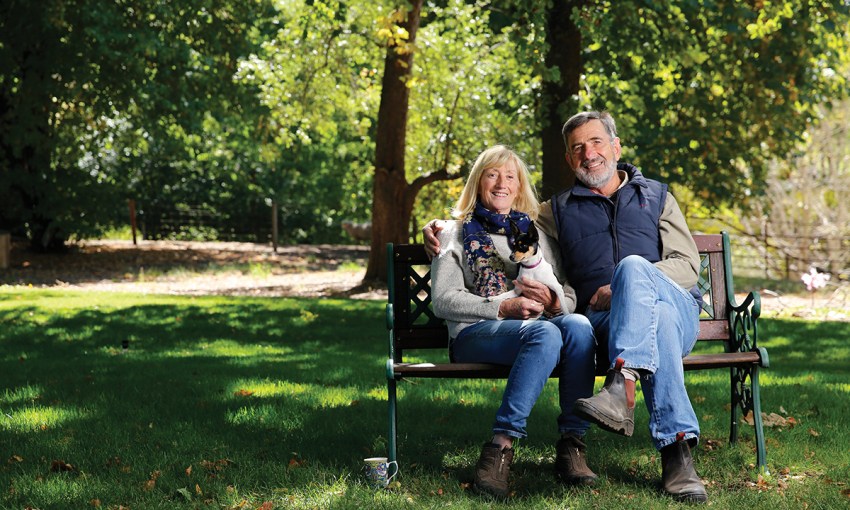Owning a piece of South Australia’s past comes with certain responsibilities, but Jane and Hans Leidig have no shortage of love for their sprawling Hills garden, hobby farm and homestead.
A living history garden at Gumeracha
Even a tall person has to stand on their tip-toes to peer over the colossal trunk of a cottonwood tree that lies where it fell in Hans and Jane Liedig’s lower garden at Gumeracha. The once 30-metre-tall arboreal giant came down during a storm two years ago.
Most of the surviving trees here are almost 180 years old and are believed to include some of the oldest oaks in South Australia.
While standing beneath the creaking limbs of one of the biggest oak trees, a sudden gust of wind brings a hailstorm of acorns clacking down on the tin roof of a garden shed, prompting Hans and Jane to raise their hands to shield their heads. “I’m going to get hit by an acorn one day,” says Jane with a laugh.
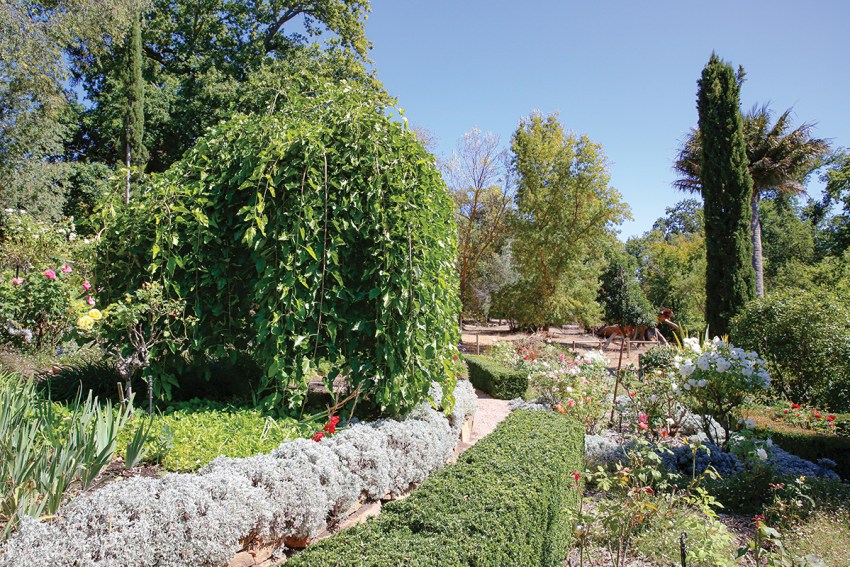
Some of these trees were planted by the property’s colonial founder, a farmer and flour miller named William Randell. In 1837, just one year after the First Fleet landed in South Australia, 38-year-old William arrived at Holdfast Bay with his wife Mary Ann and their seven children.
The family lived in a tent for almost a year before eventually being granted a large 420-hectare parcel of land at what is today Gumeracha. William described his property as “beautiful undulating park-like country” dissected by a creek – now the River Torrens.
In a bid to recreate the homeland he knew, William planted oaks from Sherwood Forest, horse chestnuts, linden trees and poplars, hawthorn, bay laurel hedges and exotic shrubs. He imported songbirds to remind him of England and stocked the paddocks with Devon cows.
A long driveway was lined with oaks and his beautiful gardens were well-tended with hedges in the shapes of birds, ships and animals. He named the property Kenton Park after his wife Mary Ann’s birth town of Kenton, Devonshire. By 1845, Kenton Park was well established.

Today, looking out from a sunroom that Hans and Jane have added to the original homestead, the picturesque landscape of trees and gardens invites meditation on how William’s property might have looked in the mid-1800s. “It would have been nice to have seen it back then,” says Jane.
“What I find fascinating is that there was absolutely nothing here for them when they arrived. They couldn’t just run to the shops; they would have made all of their materials by hand. Bringing the stone and glass for the windows would have been a feat in itself and they must have been extremely hard working.
“Almost everywhere you go here, you’ll see some remnants of the past. Wherever we dig, we’re always finding bits of china, horseshoes or strange-looking bolts.”
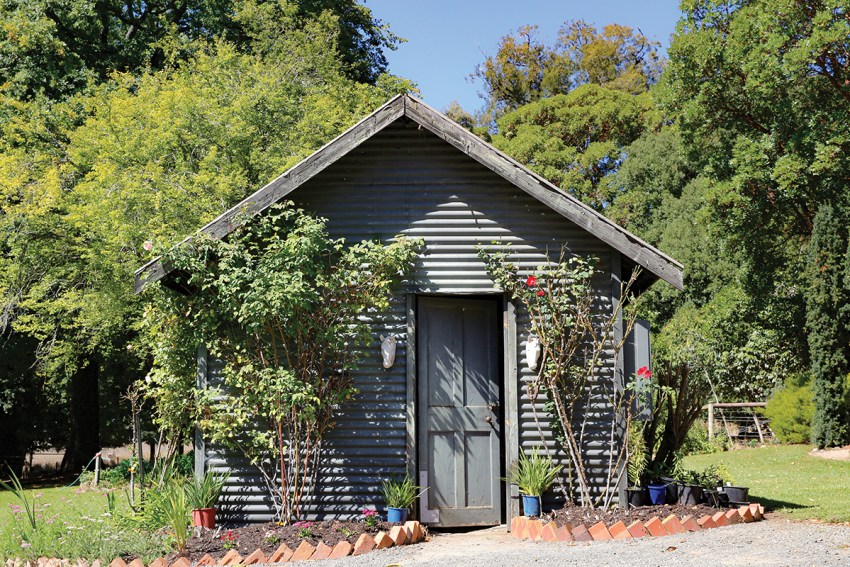
A succession of the Randell family has owned the property from its beginnings right up to the year 2000. Jane and Hans became just the third owners when they purchased the land in 2008 and moved in the following year.
“We both just fell in love with it,” says Jane. “Hans’ father was a stonemason so the buildings were of great interest, while I’m a keen gardener so it was the garden for me. We also love the south of France and it feels like that here.”
The property was originally much larger. In 1852, the Randells subdivided the land onto which the Gumeracha township was built. The two-storey home was built by William more than 180 years ago, with beautiful arched Gothic-like windows that look as though they were meant for a church.
The first Baptist Church meetings were held in the barn, then the kitchen of the house, before William donated land to build a Salem Baptist Church in 1862.
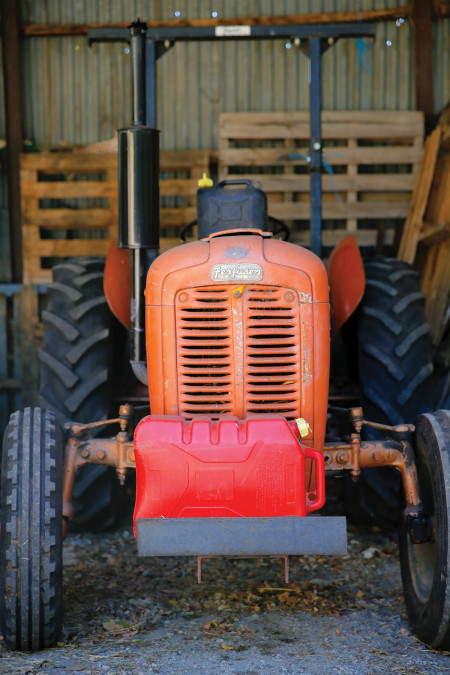
Today, the Liedigs are custodians of Kenton Park’s 10 hectares of gardens, paddocks and the original stone barn – the first structure built on the site in the early 1840s. The couple has restored some of the barn’s heritage stonework.
“You do have a duty of care to look after something if it is heritage listed,” says Hans.
“The property would make a great wedding venue – we’ve had weddings here for family and friends – but because we’re both retired, we might leave that to the next person.”
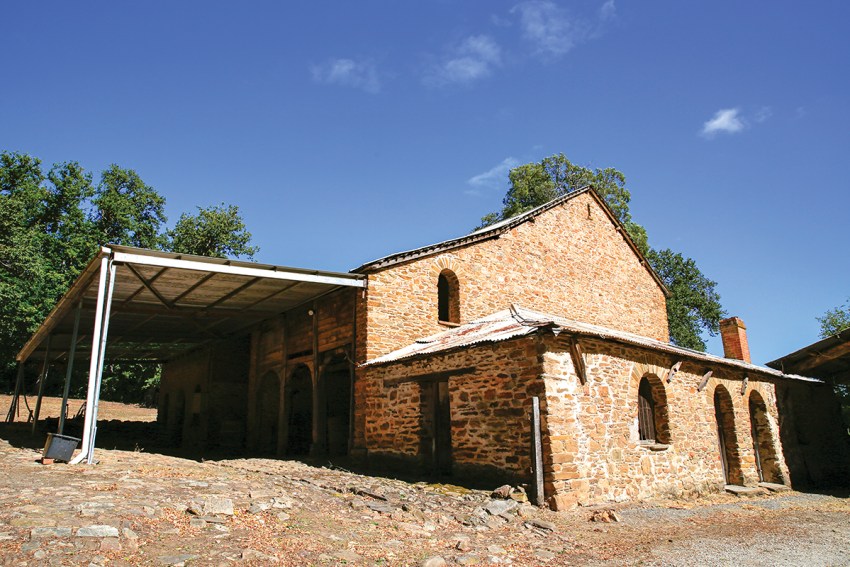
Kenton Park is home to about 30 sheep, two alpacas, a cow, a horse and 12 peacocks. “They have a good life,” says Hans.
“There’s certainly a lot of work for us, but while we can do it comfortably, it’s great. We do have a love of animals; there’s a real connection there, and with all this space we just can’t imagine being anywhere else.”
The peacocks are much-loved residents that roost in the trees, strut about the lawns and spend half of their time at the nearby Big Rocking Horse where they are well-fed by the weekend picnickers.
The peacocks now keep a wide birth of the house with the addition of puppy, Issy. Then, there are the foxes.
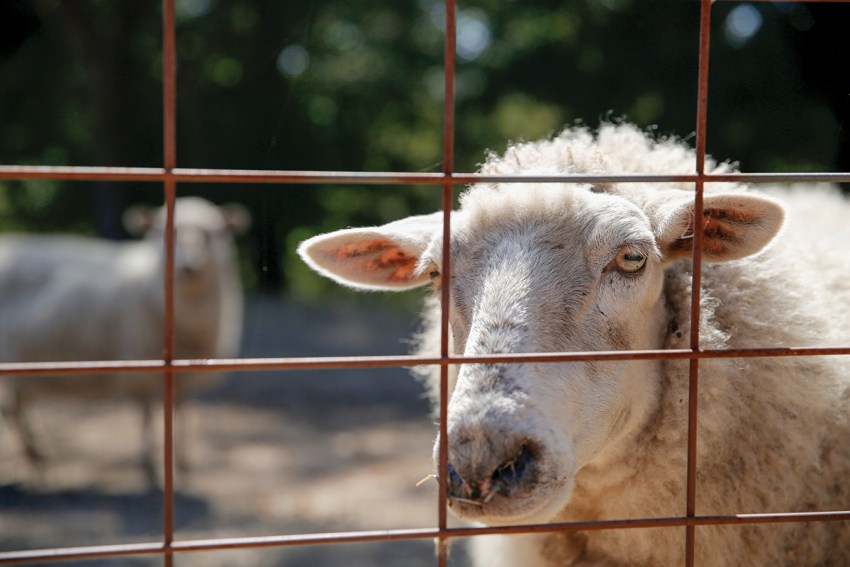
“There’s one peacock that would glide down from the trees to our house every morning; he’s got beautiful plumage and he looks quite magical,” says Jane.
“I was looking out of the little kitchen window one day and saw him gliding down from the trees and there was a fox sitting there waiting ready for him to land; I could cry thinking about it. The fox leapt at the peacock who crashed into the garage while making his escape.
I didn’t see him for several days and when he came back, he was limping. I then developed a soft spot for him, he’s very friendly and often has coffee and cake with us in the courtyard. Issy has put a stop to this and the peacocks now have their lunch on top of the chicken coops.”
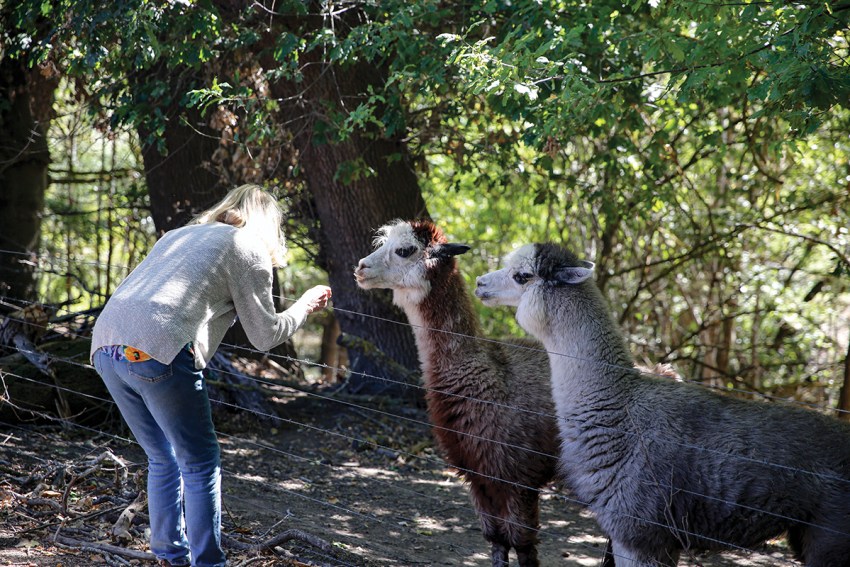
Jane’s large cottage garden is brimming with an eclectic abundance of plants and some 400 rose bushes, structured with hedging and a towering Chilean wine palm that is more than 170 years old.
Jane spends much of her time in the potting shed, which in summer is covered in the blooms of climbing roses.
“There are lots of little nooks and crannies to sit and enjoy the garden; it’s very lovely,” says Hans, whose next job is to remove the giant tree trunk laying across their lower garden. “Keeping this place is a labour of love because we don’t employ anyone, we do it all ourselves.”
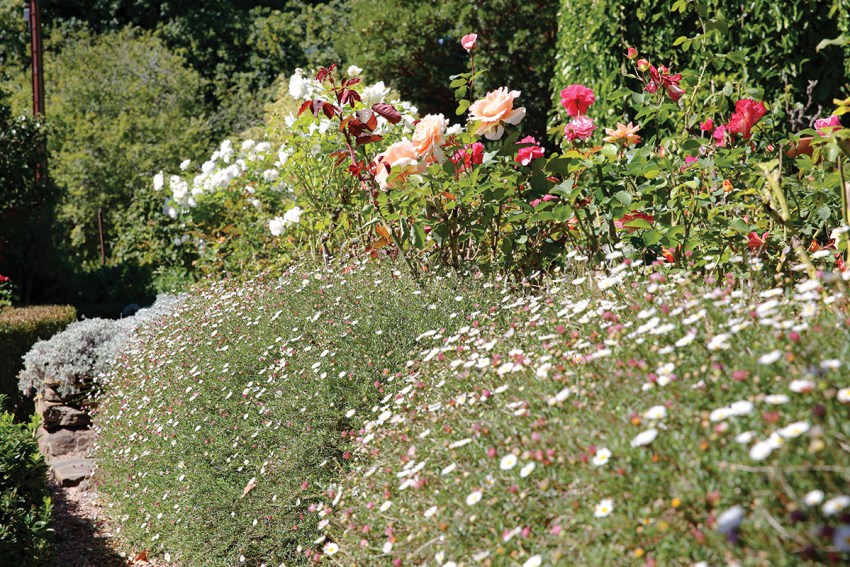
“I find it therapeutic,” says Jane. “I’ll go out and weed the garden just for therapy. We are often finding things growing that we didn’t even know were here, which I find fascinating.”
Between the pastels of autumn, the home’s log fires to thaw the icy winter nights, and then the renewal of spring, Kenton Park provides an idyllic lifestyle for not only Jane and Hans, but their family and friends, too.
The couple is also immersed in the Gumeracha community, just a short stroll away, and are members of the Country Fire Service, book clubs and a garden club.
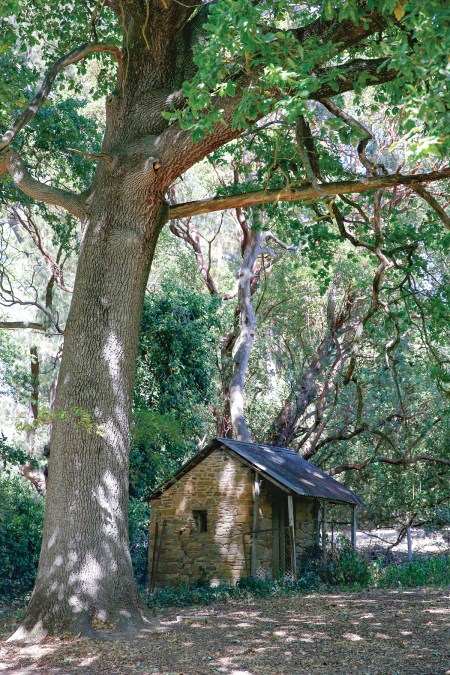
“I have to say, I try to envisage living in suburbia and I just find it very difficult,” says Jane. “It’s very pleasant living here.”
This article first appeared in the May 2022 issue of SALIFE magazine.



